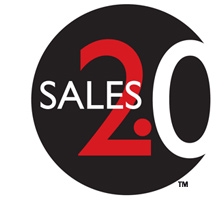McKinsey: 5 winning strategies of the world’s top sales organisations
June 12, 2012
Pär Edin and his colleagues at McKinsey believe they have identified the five winning strategies that distinguish the world’s leading sales organisations from their also-ran competitors. Pär presented their findings at the excellent recent Sales and Marketing 2.0 conference in London - and showed that we all have the potential to emulate the success of these top performers.
 The team at McKinsey evaluated the results of over 700 sales projects and identified the companies that consistently delivered industry-leading sales performance - companies that grew their revenues an average of 48% faster and their EDITDA 80% faster than their peer groups over a 5-year period.
The team at McKinsey evaluated the results of over 700 sales projects and identified the companies that consistently delivered industry-leading sales performance - companies that grew their revenues an average of 48% faster and their EDITDA 80% faster than their peer groups over a 5-year period.
What were their common characteristics? It turns out that size, geography and what they sold had little effect on performance. It was how they sold that drove the differences.
Here are the 5 common strategies that characterised the top performers:
1 They found growth where their competitors could not
Top-performing sales organisations tended to both look far ahead - an average of 10 quarters - and uncover growth opportunities in the near term. Perhaps most telling, top performing sales organisations practised micro-segmentation: they divided their potential markets into as many as 100 or more cells and identified areas where significant growth potential existed even when the overall market growth appeared slow or stagnant.
My take-away: take a look at your current approach to market segmentation and targeting. Are you looking at a sufficiently granular level to identify the pockets of segment-leading growth potential?
2 They sold the way their customers wanted to buy
There’s no excuse any more for basing your sales process and sales pipeline stages around sales activities, rather than stages in the buying decision process, and the results of the top sales performers validate this strategy. In a striking validation of Insight-Led sales strategies, McKinsey also pointed out that top performers focused their attention on the prospects for whom they had something original to offer.
My take-away: even if it means dramatically restructuring the way you manage your marketing and sales processes and pipelines, you must refocus your efforts on understanding, tracking and facilitating your prospect’s buying decision process.
3 They freed up their sales people to sell
Sales people in the top-performing sales organisations tended to spend far more of their time on customer-facing front-line sales activities rather than wasteful back office administration, and it’s no accident that these organisations used technology and process as key weapons to make their sales people more productive.
My take-away: look carefully at what your sales people are currently spending their time doing, and systematically eliminate or offload any tasks that are not directly contributing to the customer sales experience.
4 They focused on developing their people
The top-performing sales organisations not only recruited thoughtfully, they also implemented induction programmes that served to turn "rookies into rainmakers" far faster and more effectively than their competitors. They established a tempo for reporting and targeted intervention that helped the sales people with potential to realise that potential faster. They inoculated the whole sales organisation with the winning habits of their top performers, and they refused to leave new hires to “sink or swim”.
My take-away: the consequences of making a bad hire are horribly expensive. First, make sure that you recruit for attitude and not just experience. Then, involve every new hire in a carefully crafted skills transfer, induction and mentoring programme.
5 They expected exceptional performance
The top performing sales organisations drove growth from the top. They set stretching targets, challenged the status quo, established role models, and created a culture that expected results. The pains they took to equip their sales people to be successful were balanced with the expectation that their sales people would succeed, and persistent poor performance was constructively addressed.
My take-away: if you have taken pains to establish a winning environment (and only if you have), and invested in recruiting and developing the right team, it is reasonable to expect your sales people to rise to the challenge.
Five winning strategies
So there you have it: five winning strategies that have driven exceptional results for the organisations that have put them into practice. Together, they make a smarter approach to accelerating revenue growth.
My take-away: none of these winning habits require huge budgets or large staffs. All they require is smart thinking, focus, discipline and willpower. So if your organisation hasn’t yet put every one of these principles into practice, what’s the excuse?
One more thing
You might like to try our 10-minute on-line sales best practices benchmark, which reflects some of the latest published learning from McKinsey, Miller-Heiman and the Aberdeen Group. You can take the test here.



Comments